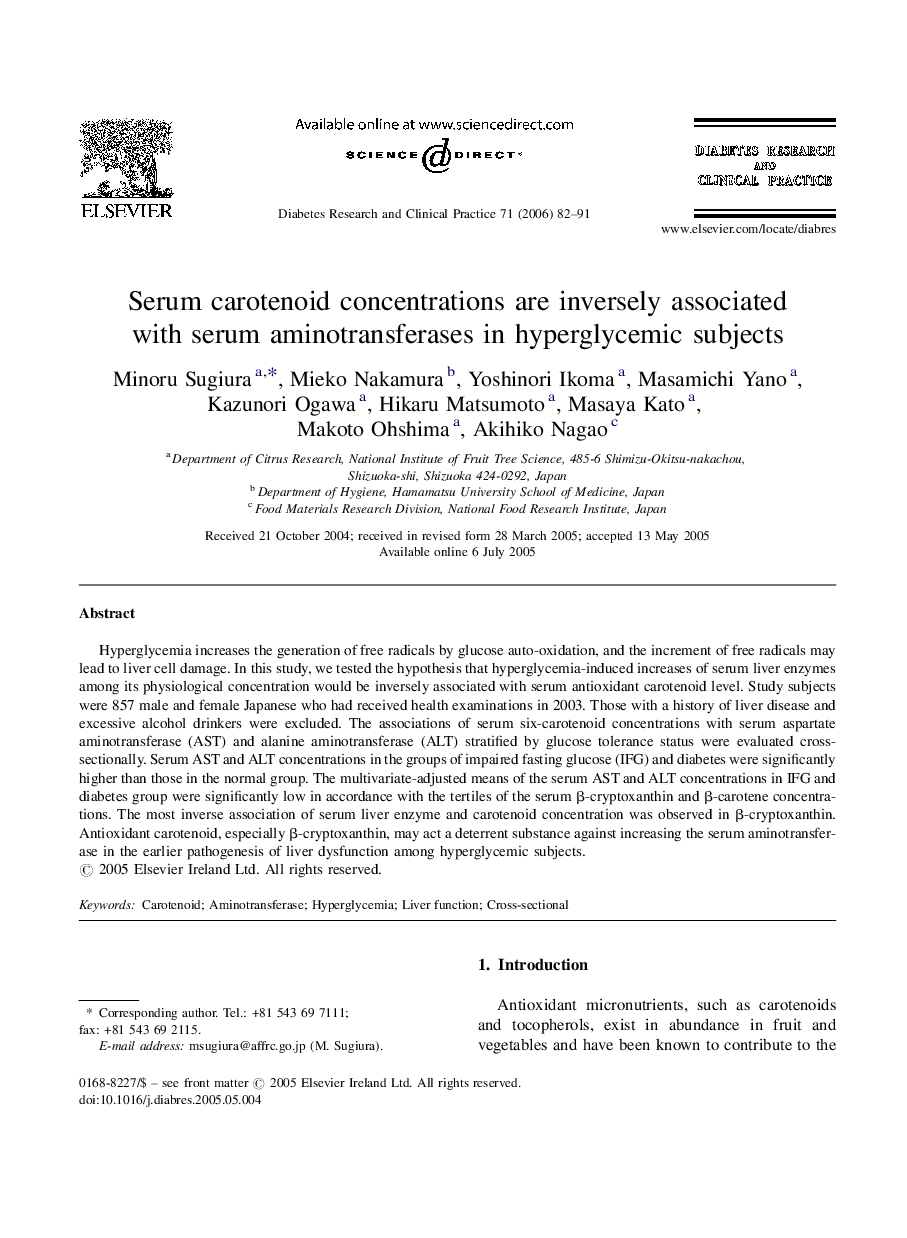| Article ID | Journal | Published Year | Pages | File Type |
|---|---|---|---|---|
| 2798957 | Diabetes Research and Clinical Practice | 2006 | 10 Pages |
Hyperglycemia increases the generation of free radicals by glucose auto-oxidation, and the increment of free radicals may lead to liver cell damage. In this study, we tested the hypothesis that hyperglycemia-induced increases of serum liver enzymes among its physiological concentration would be inversely associated with serum antioxidant carotenoid level. Study subjects were 857 male and female Japanese who had received health examinations in 2003. Those with a history of liver disease and excessive alcohol drinkers were excluded. The associations of serum six-carotenoid concentrations with serum aspartate aminotransferase (AST) and alanine aminotransferase (ALT) stratified by glucose tolerance status were evaluated cross-sectionally. Serum AST and ALT concentrations in the groups of impaired fasting glucose (IFG) and diabetes were significantly higher than those in the normal group. The multivariate-adjusted means of the serum AST and ALT concentrations in IFG and diabetes group were significantly low in accordance with the tertiles of the serum β-cryptoxanthin and β-carotene concentrations. The most inverse association of serum liver enzyme and carotenoid concentration was observed in β-cryptoxanthin. Antioxidant carotenoid, especially β-cryptoxanthin, may act a deterrent substance against increasing the serum aminotransferase in the earlier pathogenesis of liver dysfunction among hyperglycemic subjects.
